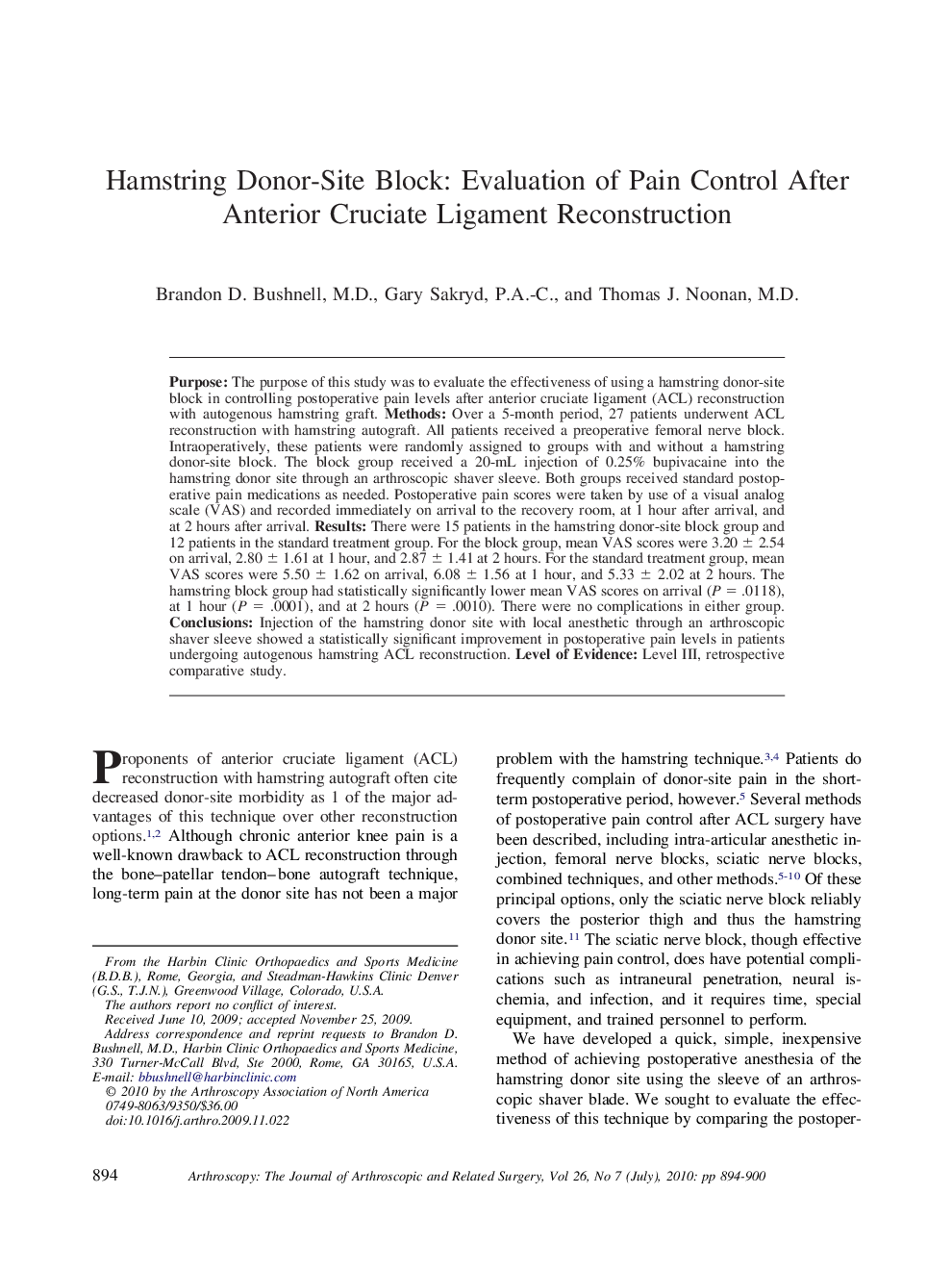| Article ID | Journal | Published Year | Pages | File Type |
|---|---|---|---|---|
| 4046283 | Arthroscopy: The Journal of Arthroscopic & Related Surgery | 2010 | 7 Pages |
PurposeThe purpose of this study was to evaluate the effectiveness of using a hamstring donor-site block in controlling postoperative pain levels after anterior cruciate ligament (ACL) reconstruction with autogenous hamstring graft.MethodsOver a 5-month period, 27 patients underwent ACL reconstruction with hamstring autograft. All patients received a preoperative femoral nerve block. Intraoperatively, these patients were randomly assigned to groups with and without a hamstring donor-site block. The block group received a 20-mL injection of 0.25% bupivacaine into the hamstring donor site through an arthroscopic shaver sleeve. Both groups received standard postoperative pain medications as needed. Postoperative pain scores were taken by use of a visual analog scale (VAS) and recorded immediately on arrival to the recovery room, at 1 hour after arrival, and at 2 hours after arrival.ResultsThere were 15 patients in the hamstring donor-site block group and 12 patients in the standard treatment group. For the block group, mean VAS scores were 3.20 ± 2.54 on arrival, 2.80 ± 1.61 at 1 hour, and 2.87 ± 1.41 at 2 hours. For the standard treatment group, mean VAS scores were 5.50 ± 1.62 on arrival, 6.08 ± 1.56 at 1 hour, and 5.33 ± 2.02 at 2 hours. The hamstring block group had statistically significantly lower mean VAS scores on arrival (P = .0118), at 1 hour (P = .0001), and at 2 hours (P = .0010). There were no complications in either group.ConclusionsInjection of the hamstring donor site with local anesthetic through an arthroscopic shaver sleeve showed a statistically significant improvement in postoperative pain levels in patients undergoing autogenous hamstring ACL reconstruction.Level of EvidenceLevel III, retrospective comparative study.
